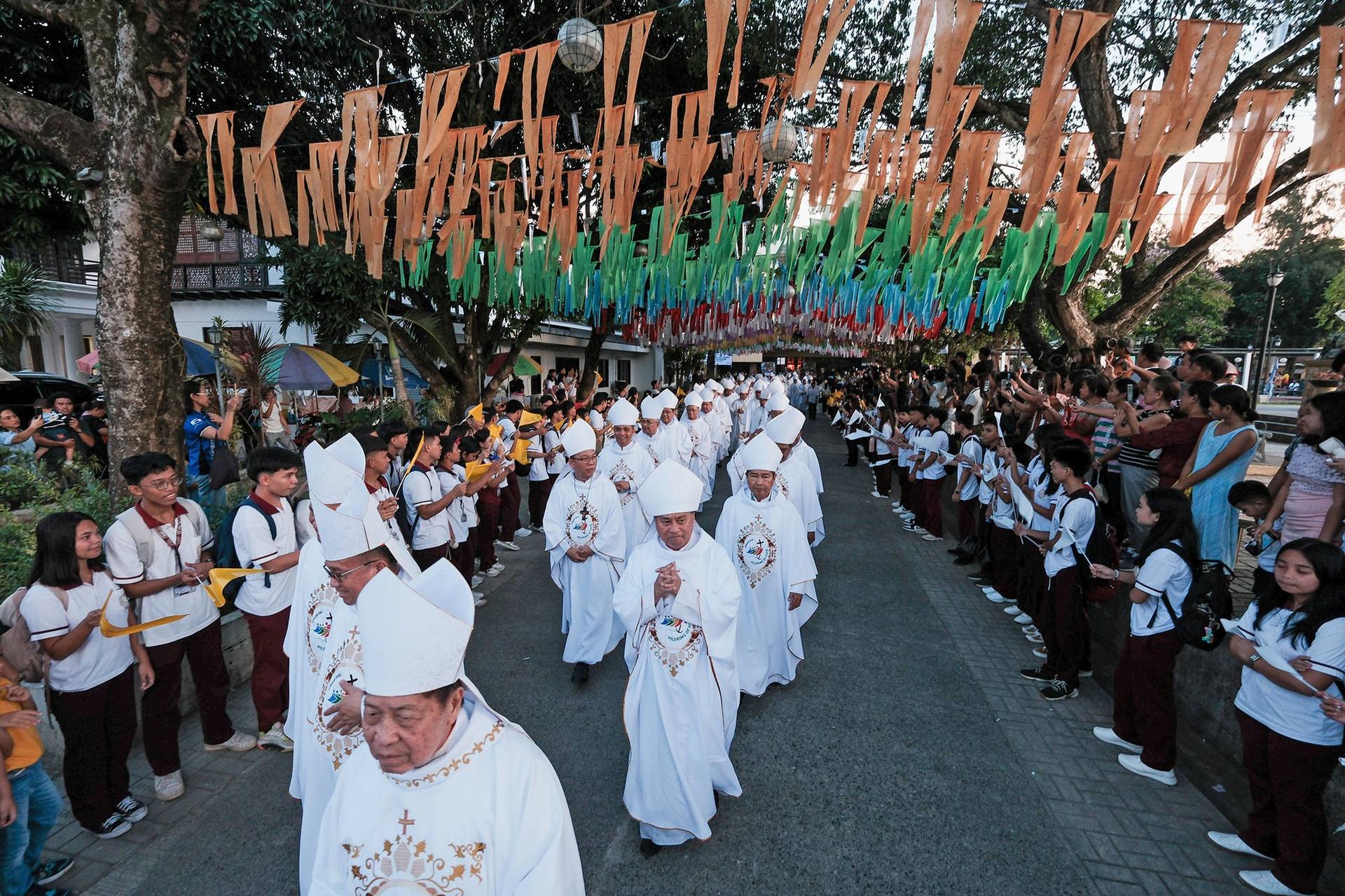SANTA CLARA, California — The ongoing “drama” between Chinese Catholics and the nation’s communist leaders has three stages, said Chinese Archbishop Savio Hon Tai-Fai, the Vatican’s nuncio to Greece.
The current stage in the drama, in effect since 2013, is one of “shrinking and getting confused,” Hon said.
“As a result of the drama, people feel so disoriented, disconnected,” Hon said in his recent keynote address to the 28th international conference of the U.S.-China Catholic Association, held at Jesuit-run Santa Clara University.
Hon cited three major players in each stage of the drama: the communist regime, the church in China and the Vatican.
The first stage he characterized as “resisting and divided,” a period lasting from 1949 to 1980, during which “the church is also divided.” Many Catholic leaders were arrested earlier during this period, Hon said, as the church was being split into underground — not official — and above-ground — recognized by the government — communities, “hostile to each other.”
That was the regime’s intent: “Divide the people, and easy for control” Hon said, while China continued to deride Vatican “imperialism” and offer “carrots and sticks” to Catholics, depending on how much one wanted to do the communist government’s bidding.
At this time, the Vatican was “trying to normalize the diplomatic relationship” with China, he noted. “The Holy See encouraged the Catholics to remain faithful, stating that an ‘independent church’ cannot be the ‘Catholic Church,'” Hon added.
The next period, between 1980 and 2013, was one for the church of “growing by reconciliation,” he said. “The two divided communities started taking up a conciliatory attitude toward one another,” Hon noted.
The Chinese government encouraged reform and “opening up,” although its policy for religious groups remained unchanged, the archbishop said. The Vatican sought to establish dialogue with the regime and promote reconciliation between the underground and government-recognized communities.
In 2013, Pope Francis and Xi Jinping, general secretary of the Chinese Communist Party, took their current offices within a day of each other, the pope on March 13 and Xi on March 14. The two leaders exchanged letters of congratulation.
Under Xi, China spoke of the dream of a stronger China, Hon said. “There are more sticks to the underground communities and more carrots to those pro-Sinicization,” he added, as the regime “tightens control and pulls down crosses” in China.
But Hon said in this period, the Vatican got “blinded” by abandoning a well-established consultation structure regarding China. He said because of its diplomacy with China, “The underground communities have felt abandoned by the Holy See.”
“Instead of showing light,” Hon said, the Vatican “diminished the light of the last teaching of the church and the martyrdom of many Catholics.”
He compared the current situation to the outbreak of COVID-19. He said the 2018 Vatican agreement on the appointment of Chinese bishops — the details of which have not been published — combined with the December 2018 Vatican recognition that two previously excommunicated bishops would head Chinese dioceses turned into a virus. When, in 2019, the Vatican published pastoral guidelines telling bishops and priests in China that they must follow their own consciences in deciding whether to register with the government, “the virus got mutated,” he said.
Hon said, “This drama presents itself as a tense play of struggle between church and state, faith and politics, conscience and power. The above is a panoramic view without depth. If we come to know the ‘persons’ who are involved in the drama, then we probably may acquire deeper insights and different perspectives to understand the church in China.”
“What kind of person I would like to look for in this tense play? A reed swayed by the wind? Or a ‘man for all seasons’? I prefer the latter,” Hon said. “Some of them were the martyrs who shed their blood, others gave equally valid witnesses with their life.”















